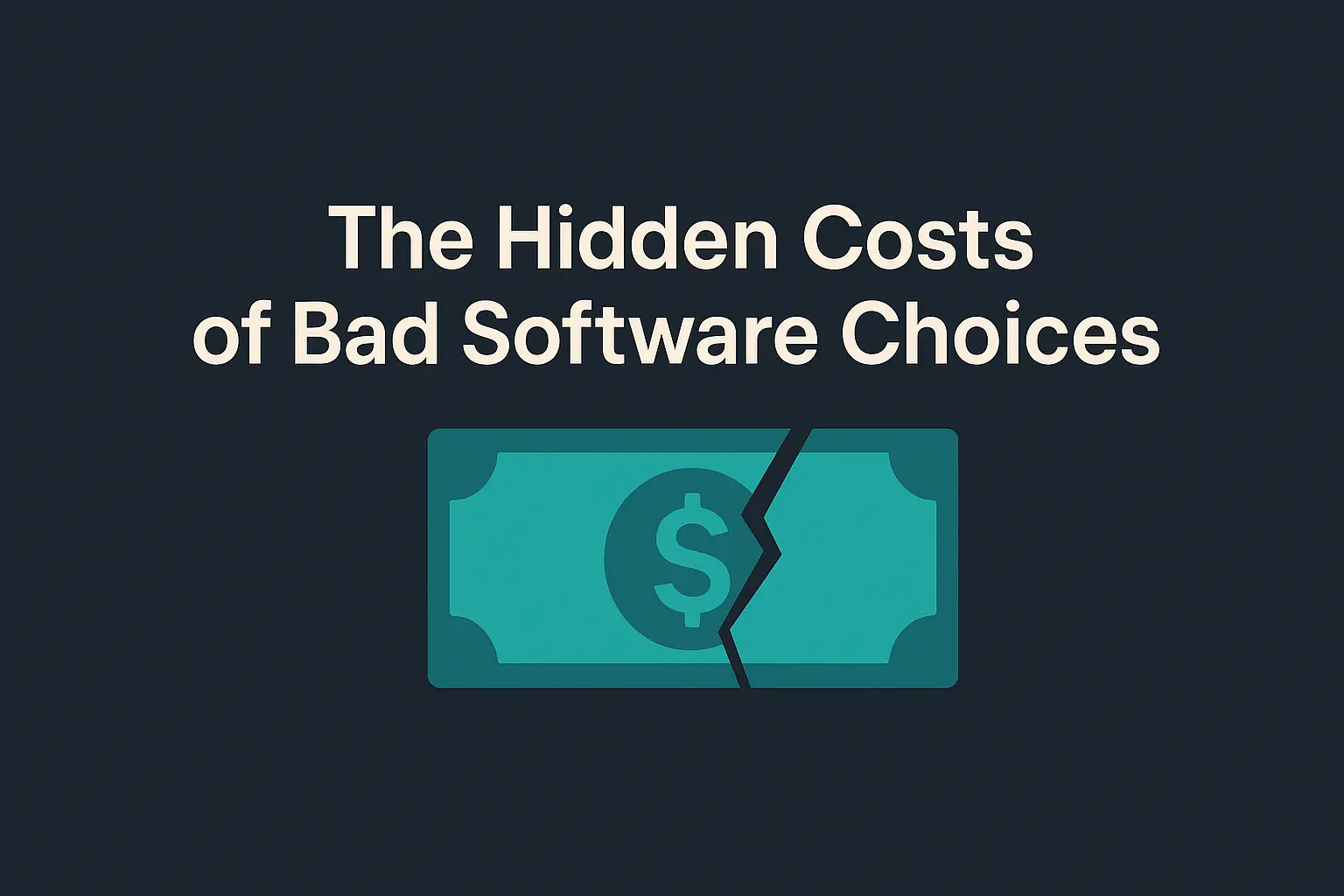
The Hidden Costs of Wrong Software Choices
When businesses evaluate software, they typically focus on the upfront costs: licensing fees, implementation costs, and training expenses. However, choosing the wrong software can lead to hidden costs that dwarf the initial investment.
The Real Cost of Software Mistakes
1. Migration and Switching Costs
When you realize the software isn't working, switching comes with significant expenses:
- Data migration to a new system
- Re-training staff on new tools
- Lost productivity during the transition
- Overlapping subscriptions during the switch period
According to industry research, the average cost of switching business software is 2-3x the annual licensing cost of the new solution.
2. Productivity Drain
Poor software choices impact daily operations:
- Slow workflows due to missing features
- Workarounds that waste time
- User frustration leading to lower adoption
- Manual processes to fill gaps
3. Integration Nightmares
Software that doesn't play well with your existing tools creates:
- Data silos between systems
- Manual data entry and synchronization
- Increased error rates from multiple sources of truth
- Custom integration costs that weren't budgeted
Case Study: The $100K Mistake
Consider a mid-sized company that chose a popular project management tool based primarily on price. Within six months, they discovered:
- The tool couldn't handle their complex approval workflows
- Integration with their CRM required expensive custom development
- The reporting features were inadequate for their compliance needs
- Team adoption was low due to poor user experience
Total hidden costs:
- Custom development: $45,000
- Migration to new tool: $25,000
- Lost productivity: $30,000
- Total: $100,000
This was on top of the $15,000 they had already spent on the original tool.
How to Avoid These Pitfalls
1. Thorough Feature Verification
Don't just read marketing materials. Verify that features actually work the way you need them to:
- Request specific demos showing your use cases
- Test with real data during trials
- Verify integration capabilities with your existing tools
- Check reporting and export options
2. Think Beyond the Initial Use Case
Consider how your needs might evolve:
- Growth scenarios: Will it scale with your business?
- New requirements: How flexible is the platform?
- Team changes: Can new users easily adopt it?
- Regulatory changes: Does it adapt to compliance requirements?
3. Get Input from Actual Users
The people who will use the software daily should have a voice:
- Include end users in evaluation
- Test user experience thoroughly
- Consider training requirements
- Assess change management needs
4. Use Systematic Comparison Tools
Tools like SuiteCompete help you avoid costly mistakes by:
- Comparing features across multiple options systematically
- Providing verification links to validate claims
- Uncovering features you might not have considered
- Saving time in the research process
The ROI of Getting It Right
While thorough evaluation takes time upfront, the benefits compound:
- Higher user adoption when the tool fits well
- Increased productivity from better workflows
- Lower total cost of ownership over time
- Competitive advantage from better tools
Conclusion
The true cost of software isn't just the price tag—it's the total impact on your business over time. By investing in thorough evaluation upfront, you can avoid the hidden costs that come with hasty decisions.
Remember: in software selection, the most expensive choice is often the one that looks cheapest initially.
